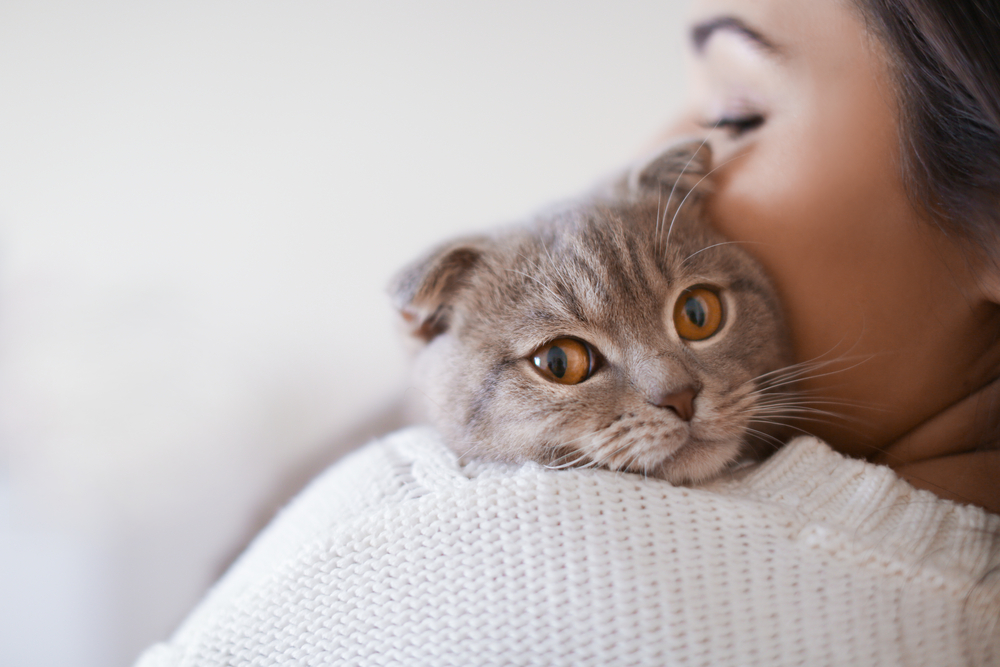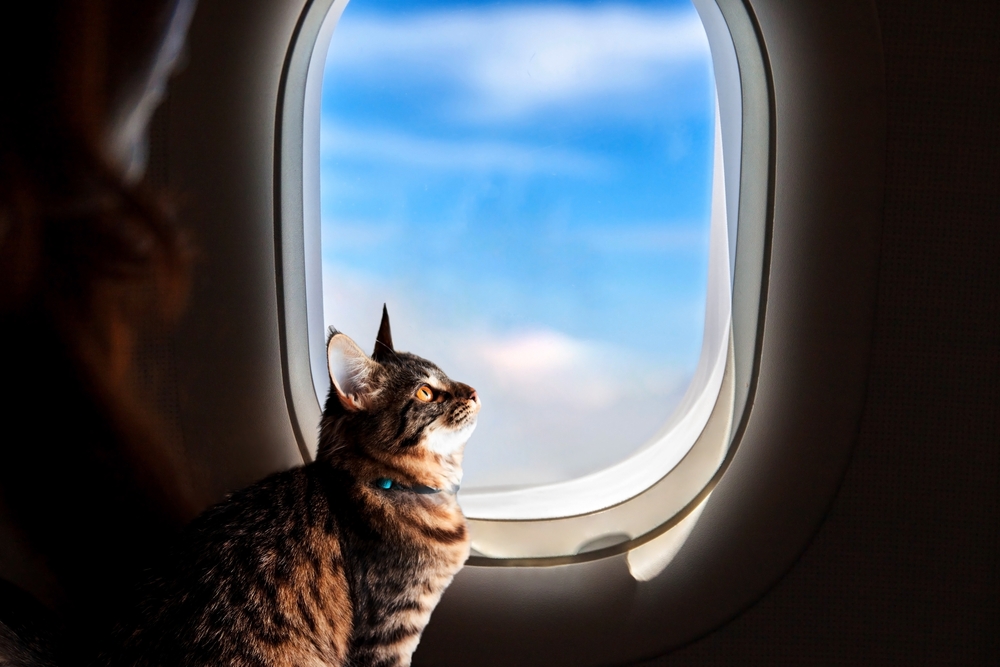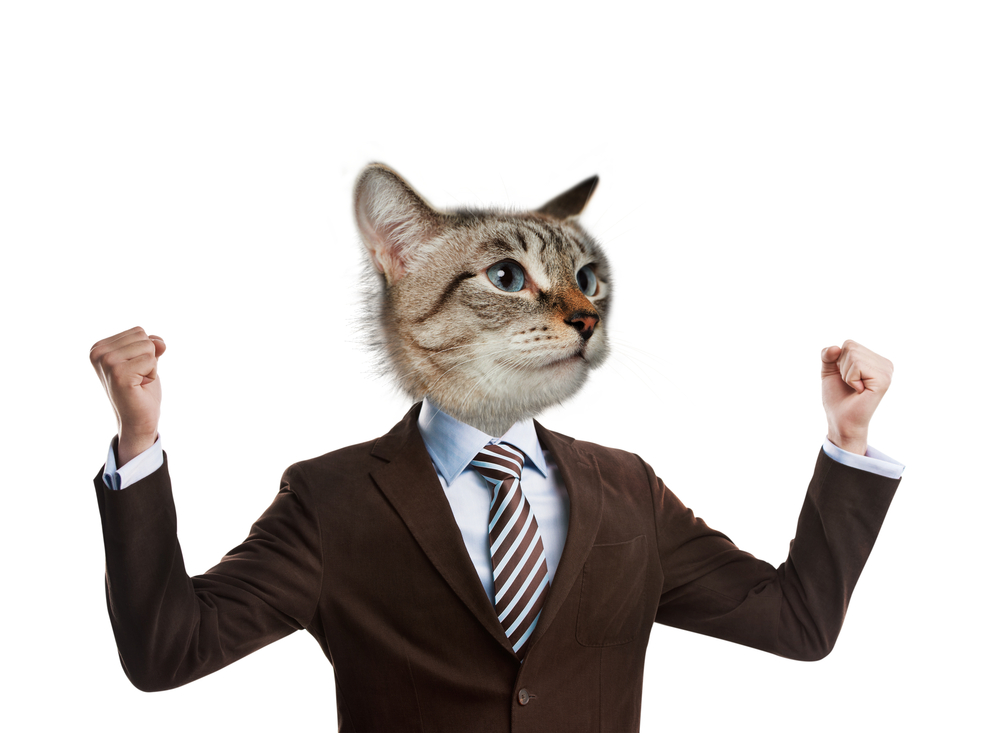Science Explained: Evolutionary Biology Shows Cats Are Nearly Perfect Creatures – And Here’s Why You Should Have One!

Perfection. It’s a word we throw around easily—about people, performances, even pets. But what if science told us that perfection isn’t just a fantasy or a flattering phrase? What if, tucked quietly into our homes or roaming wild in the shadows, there exists a creature so finely tuned by nature that evolution itself has all but stepped back and said, “I’m done here”? According to evolutionary biologist Dr. Anjali Goswami, that creature is the cat.
This isn’t just about cute paws or Instagram-worthy poses. It’s about a biological design so efficient, so consistent, that it has hardly changed in millions of years. From house cats to tigers, the feline family has achieved what many species struggle to do—find one purpose and master it completely. In a world obsessed with doing more, being more, and constantly evolving, cats offer us a rare counterpoint: the idea that true excellence might lie in knowing exactly who you are and doing that one thing exceptionally well.

The Evolutionary Blueprint of Perfection
From an evolutionary perspective, cats aren’t just charming companions—they’re masterfully refined products of nature’s design. Dr. Anjali Goswami, an evolutionary biologist at London’s Natural History Museum, sees cats not merely as cute or charismatic but as evolutionary standouts. Despite their many species, cats—from house pets to tigers—look and function strikingly alike. They exhibit minimal variation in form, an anomaly in a world where most species diversify to survive. This uniformity is not a limitation but a reflection of how cats have perfected their ecological role. Their skulls retain the same rounded structure from kittenhood to adulthood, unlike dogs whose facial shapes evolve dramatically. Cats didn’t need to branch out in form or function—they nailed a design early and stuck with it because it works.
One of the most telling indicators of this specialization is in their teeth. While other carnivores like foxes and bears retain molars for grinding vegetation, cats have streamlined jaws built for one purpose: slicing meat. Their upper fourth premolar and lower first molar form a “slicing pair,” and everything else behind it is either reduced or missing entirely. This makes cats obligate carnivores—true meat specialists. Unlike omnivorous animals that adapt to scavenging or varied diets, cats have stayed razor-focused. They are not adaptable generalists but lethal specialists, and in evolutionary terms, that’s a bold and successful strategy. They don’t need to forage; they dominate their niche with precision. It’s why, in ecosystems across the globe, multiple cat species coexist without outcompeting one another—they’re all doing the same thing, and doing it well.
This level of evolutionary efficiency is rare. While most animal groups diversify in shape, diet, and behavior to survive, cats have barely budged. Goswami notes that even for an expert, distinguishing between the skulls of a lion, tiger, or even a large house cat can be nearly impossible. The differences lie mostly in size, not in structural function. Evolution typically rewards variation and adaptability, yet cats defy that trend by thriving through consistency. Their success challenges the common belief that diversity is the hallmark of evolutionary fitness. In fact, other animals—from ancient marsupials to long-extinct creodonts—have tried to mimic the cat blueprint, only to fall short and disappear.
Cats, then, are not jacks-of-all-trades. They are masters of one—and in nature, that can be the more enduring path. While other species evolve rapidly, shift strategies, or hedge bets across ecological roles, cats remain still in their design, confident and unshaken. They’ve reached a form so efficient, so singularly tailored to survival, that evolution has little left to improve. In a chaotic and ever-changing world, cats represent a rare kind of stillness—a biological bullseye—and that’s what makes them, in the most literal scientific sense, nearly perfect.

Uniformity in Design, Excellence in Execution
The perfection of cats doesn’t just lie in their physical form—it’s also embedded in how consistently and effectively that form plays out across different environments and species. Evolutionary biology often celebrates diversity as a marker of adaptability and success, yet cats flip that narrative on its head. Their evolutionary success lies not in how much they change, but in how little they need to. Whether you’re looking at a tiny domestic tabby or a massive Siberian tiger, their bodies are built for stealth, speed, and precision. This isn’t mere coincidence—it’s a testament to how well their design works. The fact that such uniformity can exist across dozens of species over millions of years, and in radically different habitats, speaks volumes about the strength of their blueprint.
This level of uniformity is also evident in their behavior. Nearly all wild cats are solitary, territorial, and hyper-focused predators. The one major exception—lions—only underscores the rule. Lions are social, and interestingly, their evolutionary rate is slightly higher, aligning with a broader scientific finding that social animals tend to evolve more quickly than solitary ones. Yet even lions haven’t deviated much from the core feline model. In terms of evolutionary tempo, cats are considered slow-evolving mammals. But in their case, that slowness is not a weakness—it’s a sign of a form so finely tuned that little needs updating. Unlike animals that must constantly adapt to changing conditions, cats seem to have found a design that’s already near optimal.
Compare this with bears—what Dr. Goswami calls the “anticats.” Bears are ecologically diverse: pandas are herbivores, polar bears are marine carnivores, and sloth bears specialize in eating insects. Each species has carved out a very different ecological niche, and while that flexibility is interesting, it also means that no single species has mastered one role with the same precision as cats have. The cat family, by contrast, sticks to a single role—predation—and executes it with such efficiency that evolution hasn’t needed to interfere. It’s a different kind of success, one that favors mastery over versatility.
Ultimately, this evolutionary consistency is what sets cats apart in the animal kingdom. Their bodies are not just beautiful—they are functional masterpieces, honed for one purpose and replicated with minimal variation across an entire lineage. In a world that often equates change with progress, cats remind us that sometimes, excellence comes from staying exactly the same.

The Silent Sophistication of Specialization
What makes cats so enduring isn’t just their form—it’s how seamlessly that form supports their function. From their retractable claws to their finely tuned senses, every feature of a cat is built for mastery in the art of predation. They don’t roar for attention like some apex predators; they move in silence, relying on stealth, agility, and precision. Their muscular yet lightweight bodies are optimized for sudden bursts of speed, and their highly sensitive whiskers and night vision make them formidable hunters in almost any condition. Unlike many animals that rely on brute strength or pack coordination, cats embody solitary efficiency. They’re not dependent on group strategies—they succeed alone.
This deep specialization shows up in surprising ways. For instance, their gait—a smooth, almost floating movement—allows for near-silent stalking. They place their hind paws precisely in the spots where their front paws stepped, minimizing noise and visible tracks. This is not learned behavior—it’s hardwired into their anatomy. The same goes for their ability to land on their feet, known as the “righting reflex,” which begins developing at just a few weeks old. Cats don’t need training to be skilled—they are born ready. And while their behavior may appear aloof or unpredictable to some, it’s actually the product of an evolutionary strategy centered on independence and precision.
Yet perhaps what’s most remarkable is how cats have achieved evolutionary dominance without dramatic innovation. Unlike species that evolve new tools or behaviors to adapt, cats have stayed within a narrow range—and flourished. Their evolutionary cousins, such as creodonts and marsupials that tried to imitate the feline niche, either branched out or vanished. Cats didn’t need to try something new. Instead, they refined one strategy so thoroughly that they effectively closed off their niche to competitors. Other animals have had to change to survive. Cats simply continued being cats.
This kind of specialization is often risky in evolutionary terms—being too focused can make a species vulnerable to change. But cats have proven to be astonishingly resilient, thriving in a wide range of environments, from the deserts of Africa to the high altitudes of the Himalayas. Their success reveals a deeper lesson: true sophistication lies not in complexity, but in doing one thing incredibly well. In that sense, cats are not just biologically efficient—they are a quiet, living proof of the power of singular mastery.

Beyond Biology—Why Cats Resonate With Us
While evolutionary biology lays the groundwork for understanding the perfection of cats in the natural world, there’s a reason this resonates so deeply with us on a personal level. Cats don’t just survive—they embody qualities we often admire and aspire to ourselves: independence, confidence, grace under pressure. Their calm demeanor isn’t laziness—it’s conservation of energy, an instinctive intelligence. Unlike dogs, who have been bred for obedience and dependence on humans, cats retain a level of autonomy that borders on mysterious. They choose when to engage, and when they do, it feels earned. That balance between detachment and intimacy mirrors a kind of emotional intelligence many humans strive for—being present, yet self-contained.
In many ways, our relationship with cats challenges the typical human desire for control. We can’t train a cat like we would a dog, and they don’t perform on command. But that’s exactly what makes their affection meaningful. When a cat chooses to sit beside you, it isn’t out of obligation—it’s choice. This voluntary bond appeals to something deeper in us: the desire for authentic connection. Perhaps that’s why cats have become such powerful emotional companions, especially in modern life where overstimulation and constant connectivity leave little space for stillness. Cats bring that stillness. They slow us down. They sit in sunbeams and blink slowly and remind us—just by being—that peace isn’t always about doing more, but being present with less.
This quiet companionship also ties into their biological nature. Their evolutionary independence mirrors their emotional independence. Cats don’t need us to thrive, and yet they’ve chosen to live among us for thousands of years. Research into feline domestication suggests they essentially domesticated themselves—drawn to human settlements by the abundance of food, but never fully surrendering their wild instincts. That balance between wild and tame makes them fascinating. They’re not ours in the possessive sense—they are coexisting, on their own terms. And that, in itself, is a form of wisdom.
A Call to Rethink What We Admire
In a culture that constantly pushes for more—more skills, more productivity, more noise—cats stand as a quiet contradiction. They don’t conform to our definitions of success that prioritize versatility or rapid change. Instead, they master one thing and live it fully. Evolution has backed their stillness, their focus, their independence. And maybe there’s something in that model that we, as humans, need to relearn. In a world that often rewards hustle over depth, cats remind us that mastery, presence, and purpose can be enough. We don’t have to endlessly reinvent ourselves to be worthy—we can evolve slowly, intentionally, and still be profoundly effective.
There’s also a deeper lesson in how cats challenge our assumptions about connection. In their independence, they teach us that love doesn’t always look like constant attention. It can be quiet, steady, and on its own terms. That kind of presence—undemanding but real—might be exactly what many of us are missing. In relationships, in work, in life, we chase validation when what we might need is trust: in ourselves, in the value of showing up consistently, not loudly. Cats don’t perform; they exist, and their existence is enough. That’s a radical message in a world obsessed with doing.
So here’s the call to action: observe the cat. Not just the animal, but the mindset. Learn from its calm clarity. Its lack of pretense. Its refusal to bend to expectations that don’t serve its nature. Maybe the reason cats feel so perfect isn’t just biology—it’s because they’re a mirror. They show us a version of success that’s quiet, confident, and unshakably rooted in purpose. If we let that idea take hold, even a little, maybe we can start living with more focus, more authenticity—and a little more stillness in the noise.
Loading...

